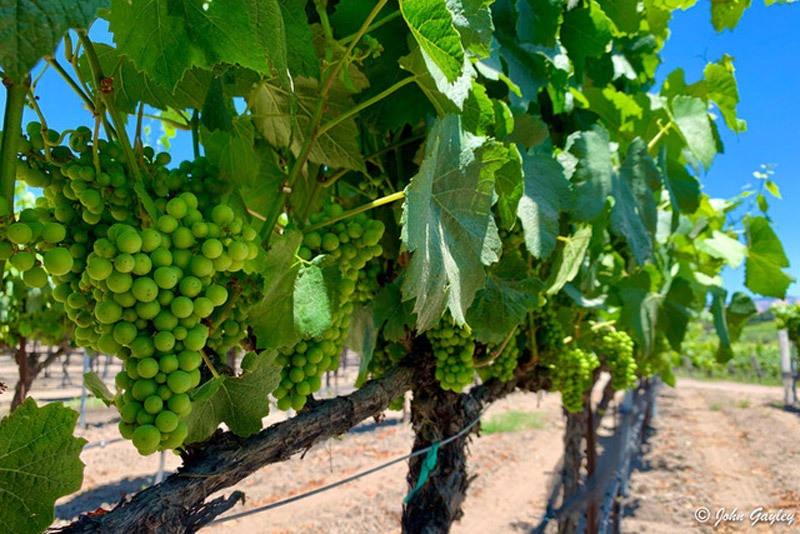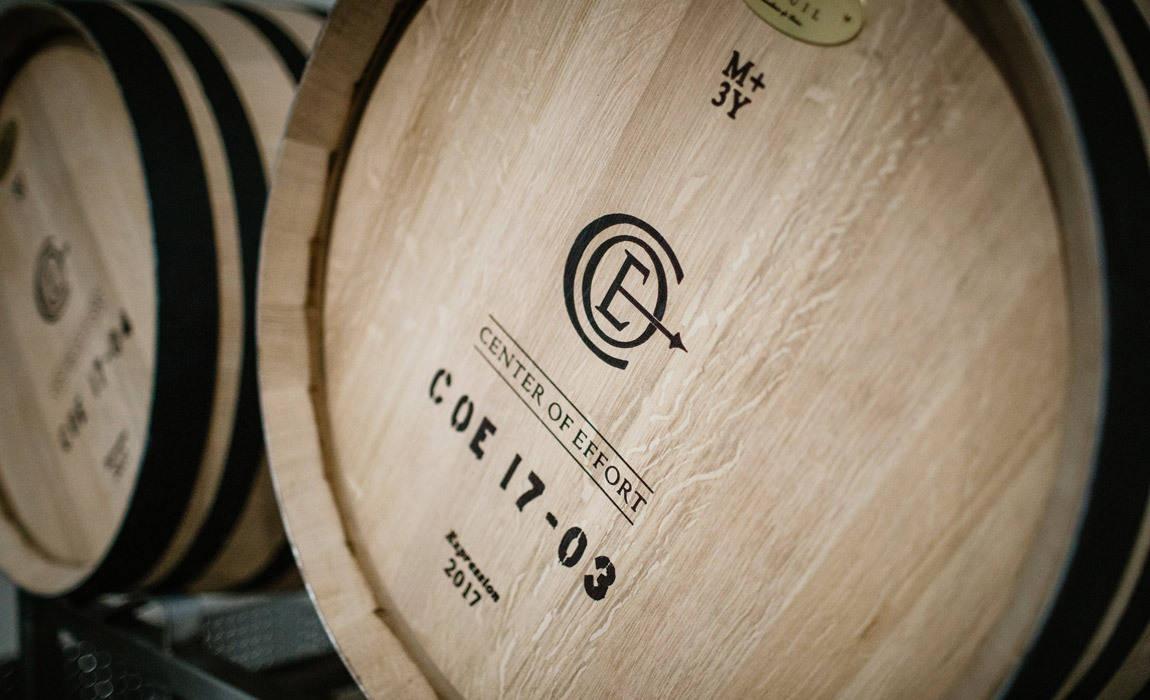Chardonnay is one of the most popular wine varietals around the world and in the United States, Chardonnay generally is the most popular choice for non-sparkling white wine (Moscato is the clear fav for white overall). For me though, I've never been a fan since the dominant style seems to be the iconic "Kendal Jackson" style that some simply refer to now as "California Chardonnay". It is iconic for being both buttery and a bit oaky with a medium balanced body. For me though, that just means you are sacrificing easy drinking for being able to truly enjoy the grapes. Recently though we had a chance to work with Center of Effort winery in Edna Valley, California who opened my eyes as to the diversity that Chardonnay grapes could provide.
Over the past few years, I discovered something interesting as I have broadened my tasting palette to include varietals beyond simply my favorites. While there are certain conventions found with certain varietals - especially heavy reds - Chardonnay has a much broader range. Some expressions you will like ... others you simply may not. Personally though, I find this journey fascinating since it allows the winemaker to create something unique to share with us. It's also fun to try different things and challenge what you think you know.
Clearly there is a difference from one vineyard block to the next, so we're not going to focus on that today. Instead, we're going to take a look at the various post harvest elements that can create unique qualities in one Chardonnay compared to another.
For me personally, I enjoy any opportunity to explore. However, my preference currently is generally a Chardonnay aged in steel barrels or concrete to give it a bit of minerality. I enjoy acid and the ability to taste the grapes and while I enjoy oaky spirits and appreciate it in my heavier red wines ... in Chardonnay though, I like to taste the more delicate fruit and acidic notes. However, prior to the last year I lacked the knowledge to understand what I liked, much less express that properly when at a restaurant.
Here are some of the things I learned about Chardonnay from the folks at Center of Effort.

What is Buttery Chardonnay?
Certain phrases are easy to understand when it comes to wine. For instance, if someone describes their wine as "oaky" then it is generally pretty easy to understand that it has been aged in oak barrels or at least used oak chips (or similar) in the process.
Buttery Chardonnay though is a bit different since there is no butter added to the wine. Additionally, the experience can manifest itself through a combination of multiple channels including flavor, smell, and even mouthfeel. Buttery chardonnay is also generally complemented by aging in oak to help emphasize the notes as well as generally smooth out any edges that would detract from the buttery smooth experience.
Some people identify it purely as a smell. This generally comes from our association with the chemical diacetyl, produced during malolactic conversion, but also sometimes used as a food additive to give things like popcorn a more buttery flavor. Diacetyl will occur naturally in wine production but winemakers can also encourage further production of it. This malolactic conversion process initiated by the winemaker turns the tart malic acid into the softer, creamier, more buttery, lactic acid. When you take that chardonnay containing lactic acid and age it in oak, the result will be a smooth, buttery chardonnay that is very easy to drink.
For decades, this was what Americans thought of as chardonnay and my dad still loves this style. He doesn't know or care about why or how it was created. He just enjoys drinking it.
Tastes change over time and while buttery was once a characteristic that was sought after, today it is less appealing among premium chardonnay drinkers. That being said, buttery chardonnays are still very popular among folks who simply drink what they like. That however, is where things get complicated.
What if you've only been exposed to buttery chardonnay and don't know that there's a whole spectrum of options that aren't buttery? Don't let one attribute of a wine disuade you from enjoying the entire varietal like I had. Will you be like the "old me" and say you don't like chardonnay and instead ask from Sauvignon Blanc or something else? Or will you be like the new me and know what to ask for when it comes to the new generation of chardonnay wines?
Other Factors A Winemaker Can Control That Impact Chardonnay Flavor
Buttery chardonnay with high levels of lactic acid are a defining characteristic for many chardonnay varietals but other factors play a strong role too. Three of the most important are aging methods, alcohol content, and amount of residual sugars remaining.
Residual Sugar / Sweetness
To an extent, the grapes and harvest time are the critical factor here, but the techniques employed by the winemaker also have a major impact.
Residual sugar - often referred to as RS on the tasting notes, refers to the naturally occurring grape sugar that remains after fermentation is concluded. While some winemakers will employ a process called chaptalization to increase the alcohol content by adding sugar, this is generally not employed to make chardonnay wine sweeter since it also can add to a higher alcohol content as well as carbonation. This process is prohibited in various countries, including Australia, Austria, Germany (for some wines), Italy, and South America. It is also prohibited in California where Center of Effort is located.
Grapes off the vine are naturally very sweet and full of sugar when they come from warm climates. While this varies from one grape varietal to the next, this is what makes grape juice so popular when creating alcoholic beverages from it for thousands of years.
When you add yeast to the sugary liquid, it begins to consume the sugar and turn it into CO2 and alcohol. While in most situations, the CO2 escapes, the alcohol remains. A winemaker can employ various factors to help the fermentation complete so there are almost no sugars left ... or he/she can halt it so there are more residual sugars left, giving the wine a sweeter flavor.
Alcohol Content
Alcohol content is essentially the inverse of sweetness though it doesn't always mean that a high alcohol wine will be dry. For instance, alcohol content in port is much higher than a traditional wine. This is because the sweet wine is produced and then fortified with a neutral grape spirit to increase the overall alcohol content. Generally speaking however, it is true that dry wines will also be higher in alcohol.
For many people, the "alcohol flavor" is undesirable, even as the effect of consuming alcohol is sought after. To help hide or smooth out the alcohol flavor, winemakers balance it with sweetness as well as tannins.
Elements That Impact Wine Aging Methods
This is perhaps the most exciting for me to explore since the aging process has a massively important role in how the wine tastes once it reaches the glass. Most of you are familiar with the concept of oak barrels and many will have also seen large steel tanks for aging wine as well. However, there are a bunch of other innovations and experiments that winemakers around the world are continuing to explore even after thousands of years.
Wood
We talk about oak barrels usually but there's a huge variety of different options here. For instance, New French Oak and Neutral French Oak will produce a different result. The major difference here is that a new oak barrel will have lots of love to give the wine. Wine aging in a new barrel will be able to pull out lots of tannins and flavors. This will provide a strong spicy, rich, and sometimes smoky flavor to the chardonnay. On the other hand, a neutral oak barrel is one that has already been used at least once. This will allow for the benefits of wood but will be much more gentle, allowing the wine to soften around the edges but not masking the flavor of the grapes.
There are many more elements to explore here as well including woods other than French Oak (American Oak, Hungarian Oak, and even Acacia Wood) that will impart different flavors, toast levels, and even barrels previously used for aging spirits or other wines. Additionally, there are some modern techniques where you are able to skip the wooden barrel and used chips, staves, and other structures.
Each of these types of wood is designed to imbue the wine - in this case chardonnay - with a different flavor as desired by the winemaker.
Ceramics and Concrete
Before the Romans began aging wine in wooden barrels, wine was both aged and transported in giant clay vessels, including amphoras. Today we're fermenting as well as aging wine in concrete vessels ranging from egg shapes to huge tanks of various shapes. The fundamental impact that ceramic and concrete add to the wine is minerality. However, concrete is also porous so, like wood, it allows some air to exchange.
Steel Barrels
Stainless Steel Barrels will be your most "pure" expression of the grape since you're able to age the wine without having it impacted by spice from the wood or minerality from the concrete. I personally enjoy the nice crisp, clean, fresh result of being aged in steel. It allows the acids and natural flavors of the grapes to come forward but this might be too much for some folks.

Blending Is Key For Most Wines
We often talk about blending wines in terms of adding a bit of one varietal to another so as to create the desired flavor. However, it can work with single varietals too. For instance, in our chardonnay workshop with Center of Effort, after tasting the same chardonnay aged in different methods, we then tasted the finished product as well.
Their 2015 Chardonnay features night harvested, full cluster pressing that features 100% fermentation, 100% malolactic fermentation in neutral French Oak barrels. Additionally, smaller lots were fermented in acacia-wood barrels and concrete fermentation vessels. Fermentation took 10 months with native yeast to complete, followed by an additional year of sur-lies (wine is resting on the dead yeast) ageing prior to enrich the wine with additional flavor before blending and bottling.
This may seem overly complex but what I love about it is being able to enjoy a product that shows the artistic talent of the winemaker. Not everyone loves every piece of art and certainly not every wine is loved by every person. However, I find it fascinating just how complex wine can be. As a winemaker in Sonoma told me a few years ago. He likes working with Chardonnay because it is a blank canvas for him to paint with.
How Do You Prefer Your Wine?
It is easy to simply say "I like chardonnay" or "I like pinot noir" but these nuances and differences are why I absolutely love the experience of visiting a winery tasting room or even a wine bar with a knowledgeable host. A few years ago I didn't know what I liked and even worse, I didn't know how many variations there were within individual varietals of wine produced from the same grape.
Hopefully you guys can take some of this knowledge and visit a local winery and have a conversation that will open your eyes and palette too.
